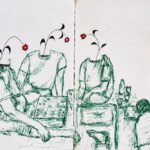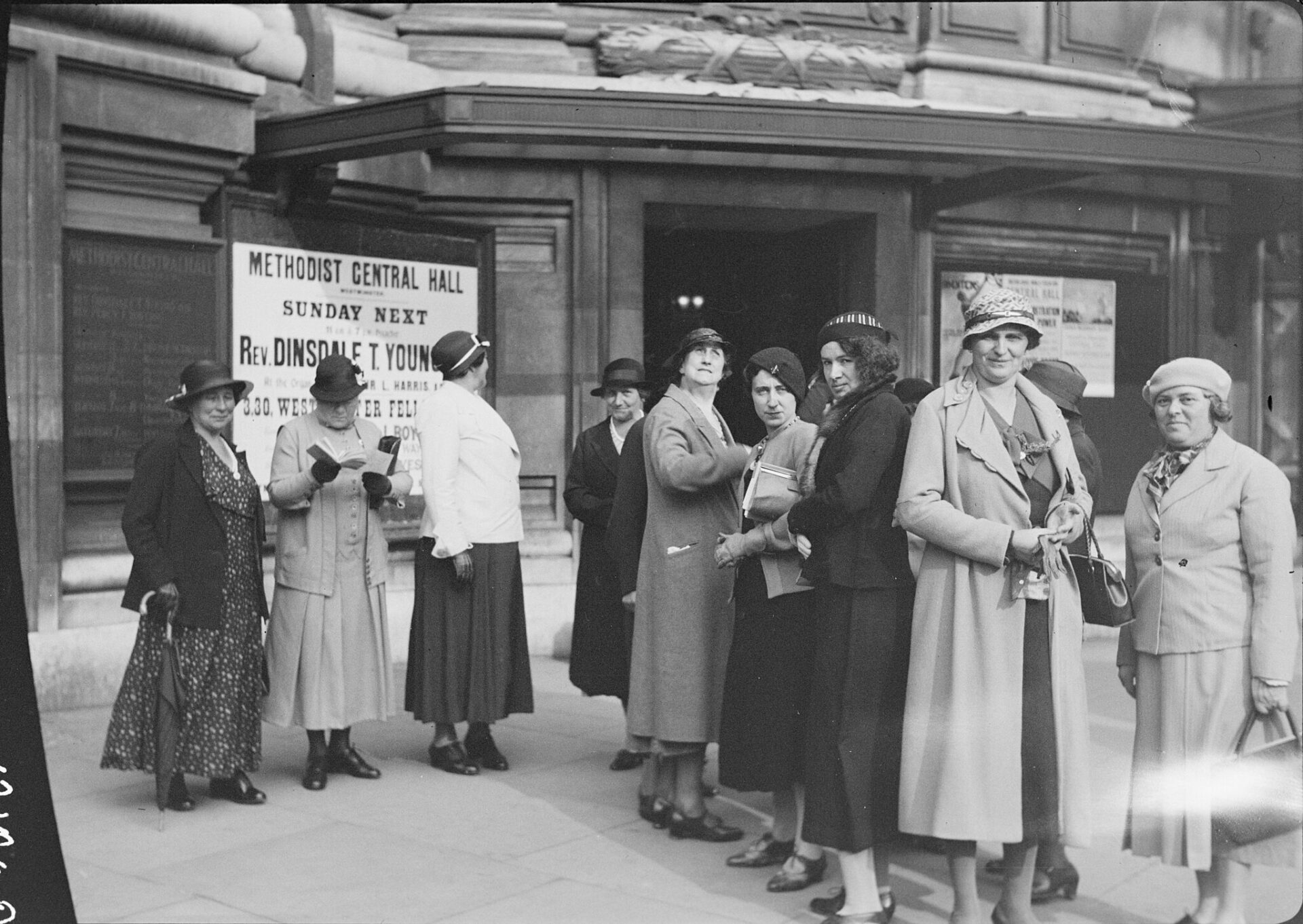In the 2022 novel “Shrines of Gaiety,” Kate Atkinson tells the story of aging London nightclub owner Nellie Coker during the interwar years and her struggle to keep control of her establishments — presumably at least one of the referents of the title — upon her release from prison. Despite the promise and allure of shiny surfaces, the story of glitzy nightclubs, their owner, her family, and the police that investigate the goings-on in them, is all depth. The staircases characters walk down to enter the clubs serve as a useful image for the concerns of the novel itself.
Atkinson is an award-winning novelist who is probably best known for her series featuring the detective Jackson Brodie. For a while now, her work has enjoyed both popularity and critical acclaim though the fact that she is a difficult novelist — that her narratives can be hard to follow — has been and remains true. In “Shrines,” a prison door is the opening scene and from the first line — “‘Is it a hanging?’ an eager newspaper boy asked no one in particular” — Atkinson announces her interest in depicting institutional and systemic violence, the individuals who perpetrate violence, the relationship between violent institutions and people who do violence. How violence expresses itself in certain times and places and how it persists across time is central to “Shrines.”
Because she’s Kate Atkinson, that great writer of detective stories about righting wrongs and wrongs that can’t be righted, she is unusually attuned to the razor-thin line between right and wrong even as she is also totally capable of drawing it brightly. Above all, perhaps, she is concerned with the victims of violence. These concerns play out across her novels so it feels important to attend not only to their particular configurations in this single work, but how this work builds on and extends extant concerns. Like Atkinson’s other novels, “Shrines” is an exploration of historical and culturally specific forms of violence. With an unerring eye for the details of time and place, Atkinson constructs a capacious vision of the persistence of violence.
The Fates of Young Women
Atkinson’s novels are always full of representatives of the state and state violence: soldiers, spies, police officers, elected officials, and the like. Still, violence at that level is never what captures and sustains her attention — the inner workings of bureaucracies and the mechanics of state power are not the stuff of her fiction. Instead, she trains her focus on how substate actors and organizations create and manage themselves in ways that cultivate violence. And she is always attentive to the fallout and ripple effects of that cultivation.
In “Shrines” the fates of young women — some already dead, some missing but perhaps not yet dead, some seemingly in danger of going missing and turning up dead — are front and center as the story moves from ballet schools in the northern England to offices in London to the stages in Nellie’s nightclubs to tell at least some of their stories. “Started Early, Took My Dog” — a twisty, turn-y tale that traces the causes and effects of the police coverup of the murder of a young woman who was also a prostitute — begins with an epigraph that could front almost any Atkinson novel:
For want of a nail the shoe was lost.
For want of a shoe the horse was lost.
For want of a horse the rider was lost.
For want of a rider the battle was lost.
For want of a battle the kingdom was lost.
And all for the want of a horseshoe nail.
She has an unerring eye and ear for the particulars of the moment of which she writes. Her descriptions of clothes, cars, food, music, interior décor, sayings of the moment and so much more to include the technologies of espionage in “Transcription” anchor the story in a certain moment in time. In “Started Early, Took My Dog,” the young woman police constable in the 1970s wears tights on the job that always get runs because, of course, she’s not yet able to wear pants.
Ubiquity of Violence
When Atkinson writes of violence she captures both its immediate look and feel, as well as the social, political, and cultural configurations that enable that particular look and feel. In attempting to justify to herself her own treatment of her “hostesses” with whom the men leave at the end of the night, Nellie observes, “So many had been lost during the war, she wondered — attempting to put a veneer of refinement on the base vulgarity of the proceedings — if they weren’t following some instinctive compulsion to restock the human race.”
The waste of the war, in Nellie’s mind, is offset by the profligacy of peace. Nellie’s clubs and the goings-on in them, of course, also get official attention. Two police officers circle each other in “Shrines” — one, Chief Inspector Frobisher, is trying to get inside Nellie’s clubs to find out their relationship to the dead and missing young women and the other, Inspector Maddox, is in Nellie’s pocket. Two men, each with an equal amount of institutional authority and power, use it to very different ends.
Atkinson also, though, writes of the ubiquity of violence, especially against women. Her prose often moves effortlessly from the specific to the more general. In “When Will There Be Good News?” Louise Monroe is thinking about the murder of a mother and her children when her thoughts turn to the fact of her own motherhood:
Louise had been there with Archie when he was little, at the empty play parks and deserted duck ponds, suddenly aware of the nutter’s sloping walk, his shifting gaze. Don’t make eye contact. Walk briskly past … Somewhere, in some Utopian nowhere, women walked without fear. Louise would sure like to see that place.
Atkinson here shifts between Louise’s own experience and ventriloquizing the advice so many women receive when dealing with unwanted, unwelcome attention from men. “Shrines” describes the trajectories of young women, “The majority of girls who ‘graduated’ had no hope of making it to the theatre and finding the fame they craved so badly. Instead, they were siphoned off into the nightclubs … Some ended up on the street, of course. Or washed up on the banks of the Thames.”
The immediate referent of the possible trajectories of these young women — all of them a decline from what they had hoped — are, of course, the characters in Atkinson’s novel, but the downward arc is so familiar across so many decades that it also exceeds any specific referent. Atkinson excels in sticking to the particular, and using the adhesive to collect even more points of reference to it.
World Between Wars
Several other Atkinson novels have been backset. “Transcription” and “A God in Ruins” both take place — or largely take place — during WWII. “Life After Life” launches its story from 1910. And because she’s so interested in the long tail of violence, even a lot of scenes in her detective fiction are backset: many take place as early as the 1970s. So Atkinson has long experience writing about other days in ways that resonate with our own day. Her careful attention to the look and feel of an era make the novel vivid, and it’s that very vividness that often allows her stories to feel like they are anchored in their ostensible time period. That fastening holds even though the novels also seem able to describe the social, political, and cultural arrangements of our own day that continue to allow violence.
“Shrines of Gaiety” is about a world between wars. It’s about a world at seeming peace that is full of people killing each other (mainly, but not exclusively, men killing women). In this sense it’s not only a novel about a particular time and place and milieu, but a story of the time in which it was written. The characters in “Shrines” want to put the war and its fallout behind them. Just before “Shrines” was published it looked like the American withdrawal from Afghanistan might put at least part of the world in much of the same position as the characters in “Shrines”: on the other side of war. As I write, of course, land wars in Europe and in the Middle East are very much realities. What Atksinon brings to light is the violence in the midst of peace, and what makes her insights into this so compelling is how she allows her story to take on the outward appearance of the time in which it is set even as many of its themes and concerns are intensely relevant today.





















